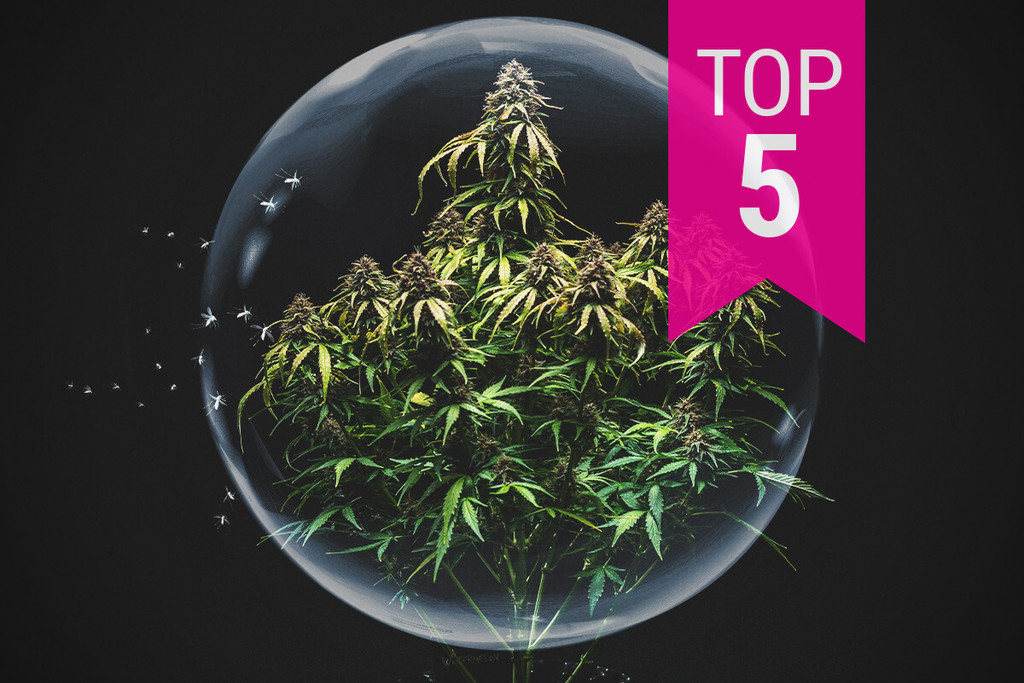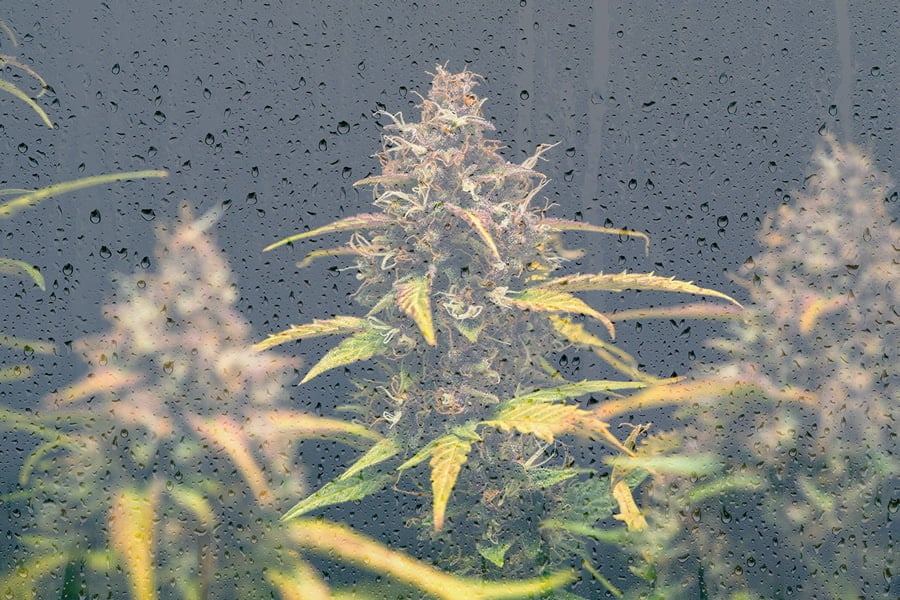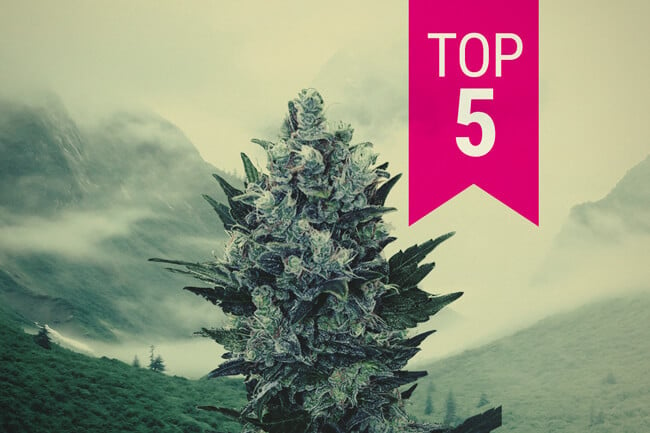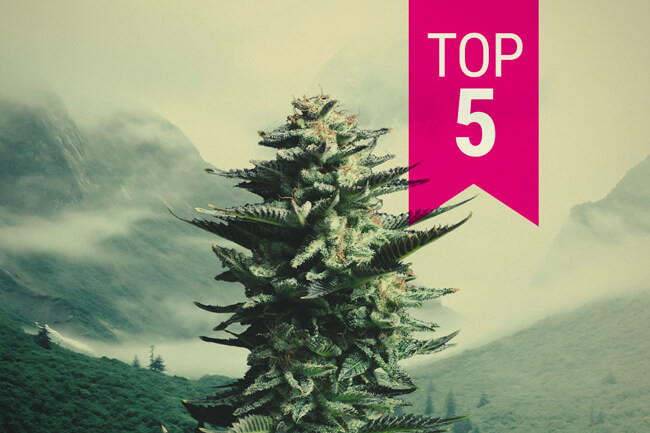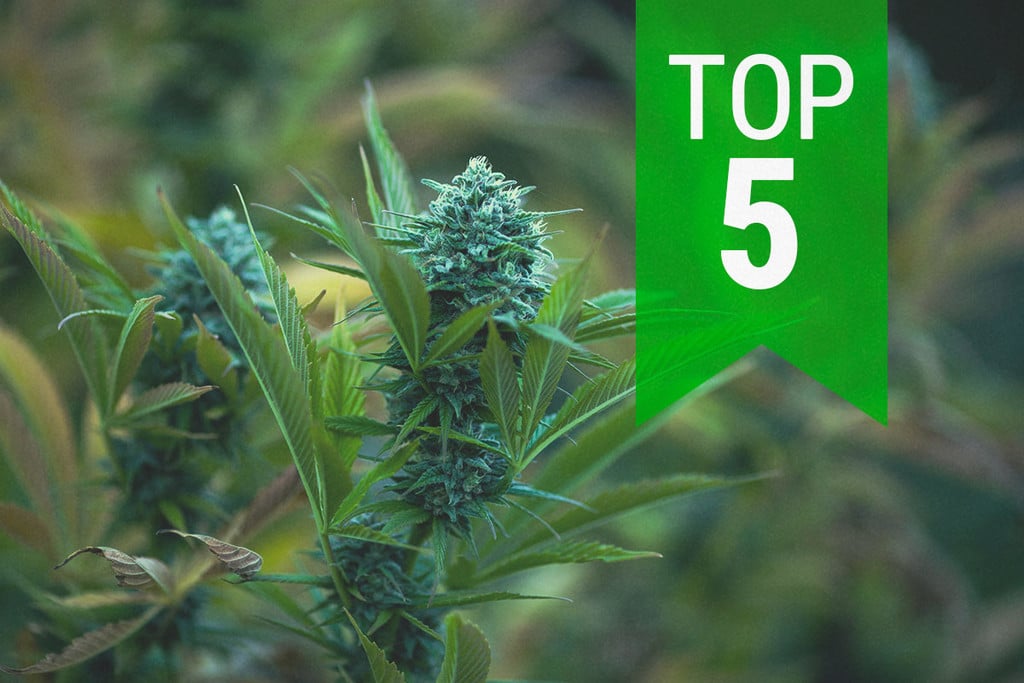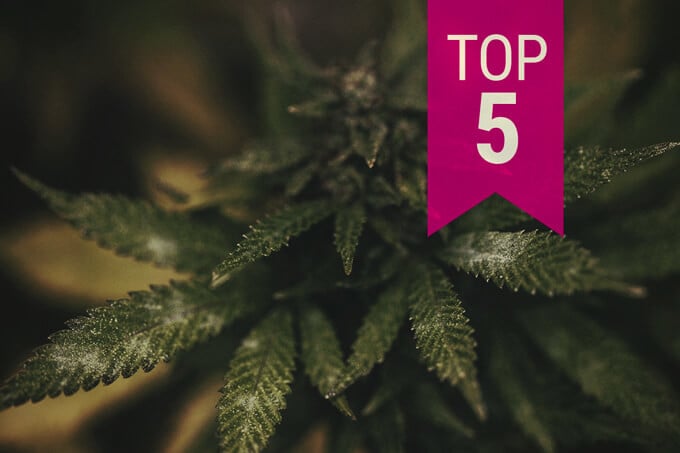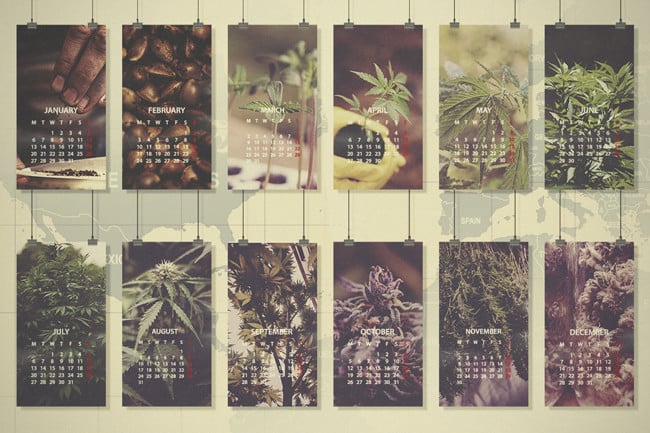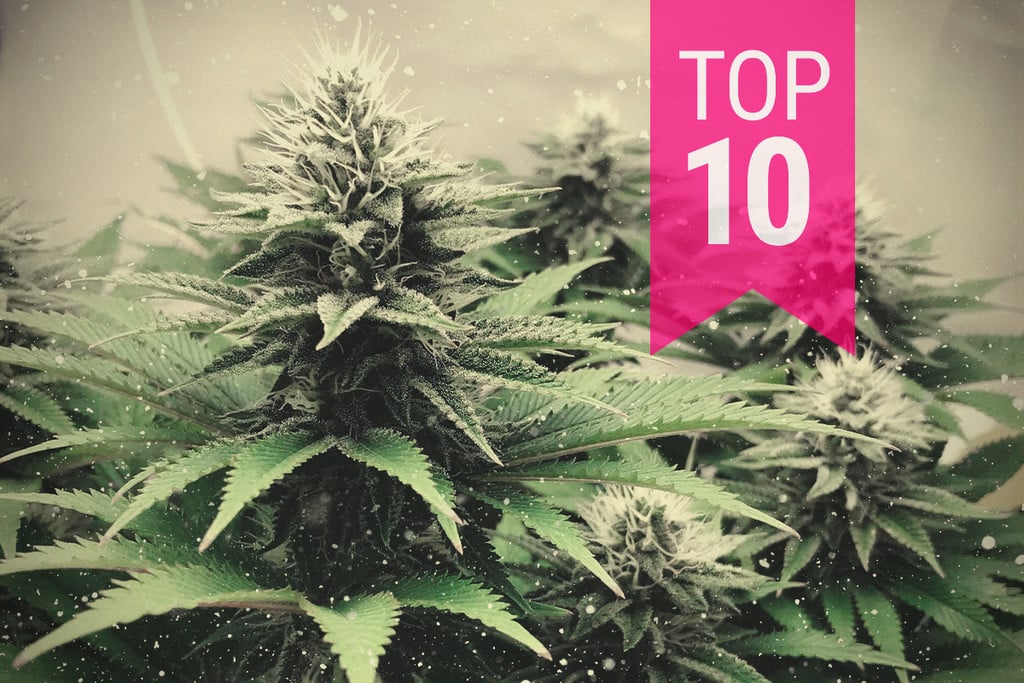.
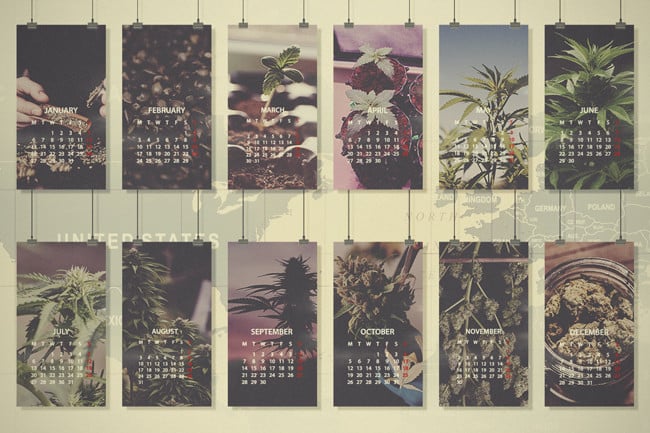
Cannabis Monthly Grow Guide: Northern Europe, USA & Canada
Growing outdoors in nature is very rewarding, even in colder areas of the world. This grow guide will help you get your timing right and achieve strong, resinous buds in northern regions.
Growing outdoors is a fulfilling and exciting experience. Tending to your plants each day with your skin in the sun and fingers in the soil is an entirely therapeutic experience. The cannabis plant is a versatile and resilient life form that can be grown almost anywhere on earth. Growers within the northern regions of Europe, the United States, and Canada may be put off from cultivating crops outdoors, assuming that it’s simply too cold and dark for most of the year.
However, this simply isn’t true. It’s possible to grow luscious cannabis plants in these regions, as evidenced by all the growers who currently do. Although shorter in duration, these areas still have a long enough growing season to produce good harvests. The shorter season simply means cultivators need to be more aware of their timing. This guide will show you what to consider, month by month, to ensure a smooth and successful growing experience.
Northern Europe consists of numerous countries, including the United Kingdom, the Scandinavian nations, and part of the Baltics. For northern Europe, we will use the UK as a reference. For the US, we will reference the state of Washington, and for Canada, we’ll use numbers from Alberta. Most of the populated regions within these countries provide an outdoor growing season that can be worked with. However, the far northern parts of Canada and Scandinavia experience extremely low and inhospitable temperatures, making indoor growing a better option.
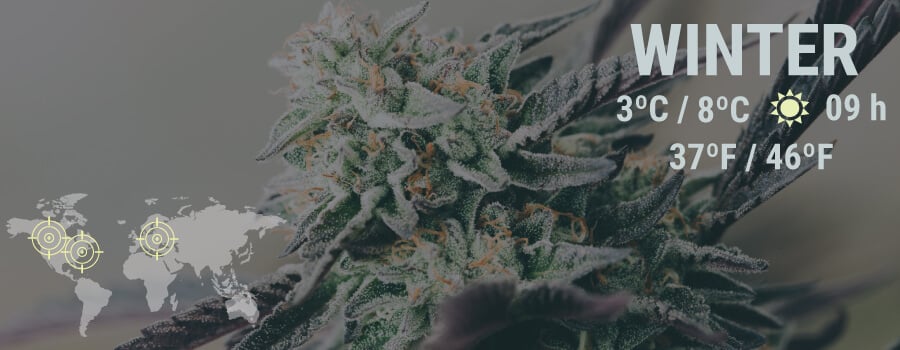
JANUARY
• Average daylight hours:
UK: 8h
Washington: 8h 40m
Alberta: 8h
• Average temperature:
UK: 3.7–8.3°C
Washington: 3–8°C
Alberta: -15.7–-3.6°C
January represents the middle of winter. Although it’s definitely going to be freezing outside, and short days means sunlight will be minimal, there are still plenty of jobs that can be done in preparation for spring. To keep you busy in the garden and get you excited for the season ahead, you can start by shredding your Christmas tree for mulch later in the year. You can also start cleaning out pots and greenhouses, ready for the arrival of spring.
There won’t be much cannabis action during this month in all the countries mentioned, however, putting in some work now will reduce the amount of tasks waiting in the season ahead. Other jobs you can do in areas such as the UK and Washington include digging over any vacant plots, scattering worm castings for soil health, and setting up bird feeders to attract species that will help to reduce pests later down the line. These jobs will be hard to accomplish in areas such as Canada and Scandinavia during this time due to frosty soil and heavy snowfall.
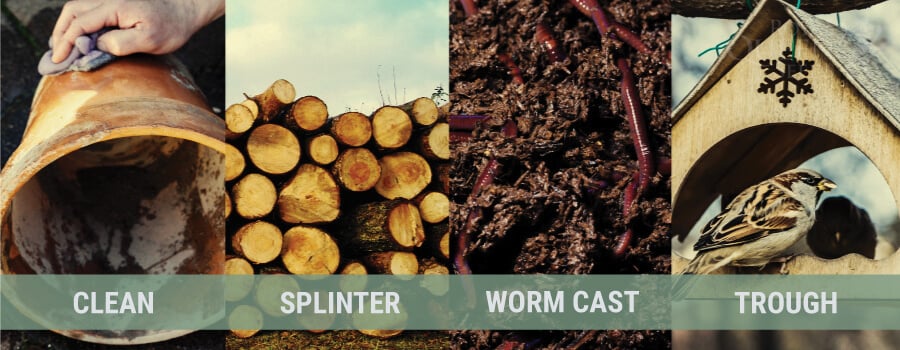
FEBRUARY
• Average daylight hours:
UK: 9h
Washington: 9h 50m
Alberta: 9h 30m
• Average temperature:
UK: 3.4–8.5°C
Washington: 3–10°C
Alberta: -12.3–-0.5°C
During February, northern regions still experience short daylight hours and cold temperatures. Growers living in areas such as the UK, the northern US, and Denmark can start to germinate seeds indoors at the end of the month for an early start; seeds can then be transplanted outdoors when the growing season commences. Growers within Canada and Scandinavia can also benefit from germinating seeds at this point to help extend much shorter growing seasons. Once seeds have started to sprout, you can place them under artificial lights at temperatures of around 23°C.
In all northern regions, February can still be used as a productive month to stock up on supplies needed in the months ahead. Ensure you have everything you need, including pots, nutrients, watering cans, and seeds. Most northern growers opt for indica-dominant strains due to their shorter flowering times, making them more suitable for shorter growing seasons.
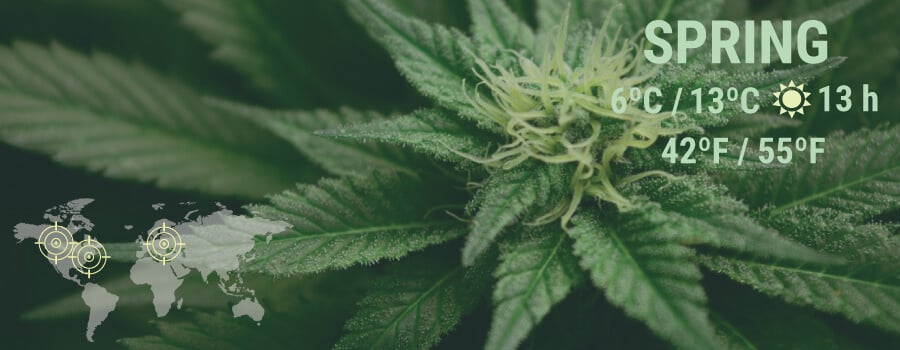
MARCH
• Average daylight hours:
UK: 11h
Washington: 11h 30m
Alberta: 11h 20m
• Average temperature:
UK: 5–11.1°C
Washington: 5–13°C
Alberta: -8.4–3.3°C
During March, things start to begin warming up as the days increase in length. It’s definitely time to commence the cannabis growing season. Growers in all regions should have seeds started indoors, and mother plants used for cloning should be on the way to maturity. Growers in Canada and Scandinavia can begin to dig up vacant beds, install bird feeders, and scatter worm castings on the soil. Growers within northern locations in the US and warmer northern European countries will soon be transferring plants outside. The warmer weather and longer daylight hours can be taken advantage of by sprouting more seeds on windowsills.
APRIL
• Average daylight hours:
UK: 13h
Washington: 13h 10m
Alberta: 13h 30m
• Average temperature:
UK: 6.4–13.5°C
Washington: 6–15°C
Alberta: -2.4–10.6°C
Spring has officially arrived. Temperatures are significantly higher during April in all regions, and days are much longer. For growers in more southern parts of northern Europe and the northern US, it’s time to move plants out from under artificial lights and into the sun. You can start moving them outside into the beds you fertilised and dug earlier in the year. Alternatively, you can transplant them into larger pots or transfer them into greenhouses. Growers living in the midwest of the US, Scotland, and Denmark may choose to keep their plants potted in order to bring them inside during the night to avoid exposing them to detrimental temperatures. If you have spent the last few months cultivating a mother plant, then it's time to start cutting clones and rooting them within blocks.
Growers in regions such as Alaska, Iceland, Canada, and Scandinavia will have to wait a little longer until placing plants outside. There is still a considerable risk of frost, and nights can still get very cold.
Garden tasks during April will primarily involve weeding garden beds to prevent species from taking up room and removing nutrients from the soil. Growers can also use this time to start planting flowers and other companion plants that will help to attract beneficial predatory insects into the garden and repel certain pests.
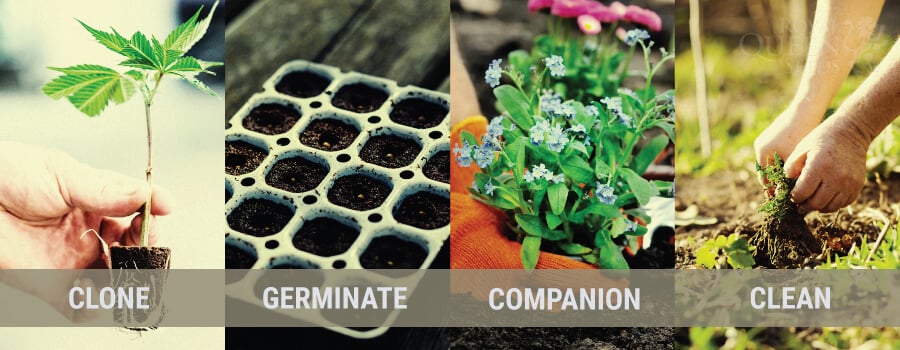
MAY
• Average daylight hours:
UK: 15h
Washington: 14h 50m
Alberta: 15h 20m
• Average temperature:
UK: 9.4–17.1°C
Washington: 9–18°C
Alberta: 3–16.4°C
May is when warmth starts to arrive in all regions. The risk of frost within Canada and Scandinavia is minimal, so growers can start to move their plants outdoors into garden beds and pots. It’s advised to keep plants potted in colder regions as they may have to be moved indoors at the end of the season to escape frost. If you have the luxury of a greenhouse, then it’s best to move plants here first to avoid the unlikely event of a large drop in temperature that could lead to a late-spring frost.
For growers in warmer regions who have already moved their plants outdoors, May is largely a month of letting your plants settle into their new environment. Keep them well-watered and make efforts to keep their environment free of competitive weeds. For growers living in particularly rural regions, it’s a good idea to start installing netting or fencing to minimise the threat of deer and birds munching on your crops. Temperatures of around 17°C in locations such as Washington state and the UK can cause greenhouses to become seriously warm, so be sure to open vents and doors on hot days.
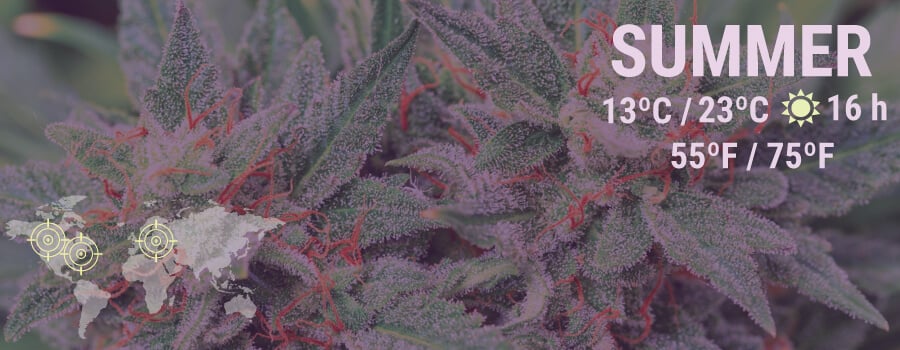
JUNE
• Average daylight hours:
UK: 16h
Washington: 15h 50m
Alberta: 16h 20m
• Average temperature:
UK: 12.3–20°C
Washington: 12–21°C
Alberta: 7.4–20.6°C
June is the official start of summer in the Northern Hemisphere, with temperatures in Scandinavia and Canada even creeping up towards 20°C. June 21st marks the summer solstice. Plants will start to grow fast due to long and sunny days. This surge in growth is a good time to carry out topping to increase yields at the end of the season. Growers with limited space or those trying to maintain discretion can also begin defoliating and using techniques such as low stress training to keep their plants close to the ground. If you are growing any strains that produce large and heavy buds, it's time to put in stakes and other supporting structures to prevent collapse. All growers should move their plants outdoors during this time, even those living in colder and more alpine regions.
June is a busy time in the garden; there is plenty of work to be done whilst enjoying watching your plants grow. Regularly hoe down borders to keep weeds at bay. Watering is also essential, especially if rain is lacking. If you’re watering by hand, be sure to regularly check each plant for dry soil. If you are using an irrigation system, check it for maintenance, making sure all connections are working properly and there are no leaks.
JULY
• Average daylight hours:
UK: 16h 30m
Washington: 15h 50m
Alberta: 16h 30m
• Average temperature:
UK: 14.6–22.6°C
Washington: 14–24°C
Alberta: 9.5–23.2°C
July is often the hottest month of the year in all regions. Plants will go through explosive growth during this month due to long daylight hours and hot temperatures. The midday sun is enough to dry out soil in a day, so be sure to keep your plants hydrated if you are watering by hand. Male plants will also make themselves obvious during this stage if germination took place around two months beforehand. Pay close attention here unless you decided to opt for feminised seeds. You will need to keep an eye out for pollen sacs forming at the nodes of side branches. These structures resemble two small spheres. In contrast, female plants will start to produce calyxes, which feature two white pistils. It’s important to remove male plants as soon as you see them to prevent them from pollinating females later down the line. Pollinated female plants will start to produce seeds, which can greatly reduce yield and potency.
Garden tasks during July are similar to June. Keep the garden weeded and watered. Also, be on the lookout for any signs of fungal infections and pest infestations. Use a magnifying device to get up close and personal with the leaves and stalks to rule out any threats.
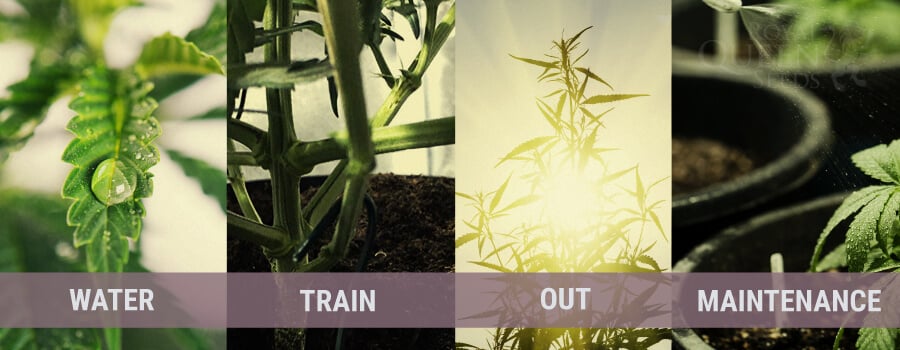
AUGUST
• Average daylight hours:
UK: 16h
Washington: 14h 40m
Alberta: 14h 50m
• Average temperature:
UK: 14.7–22.5°C
Washington: 14–24°C
Alberta: 8.6–22.7°C
August is an extremely exciting time for outdoor cannabis growers. Daylight hours start to decrease during this month, a change in the light cycle that prompts photoperiod strains to enter the flowering phase. However, this solar transition is slower in regions such as Alaska and Iceland, meaning plants in these regions will begin flowering later in the year. This is a good time to begin pruning and defoliating plants to allow more sunlight to access the bud sites.
Garden tasks in August are the same as the rest of summer. The heat waves of August are capable of seriously drying out the soil. Watering may be a daily demand. Installing irrigation can help to massively reduce the workload.
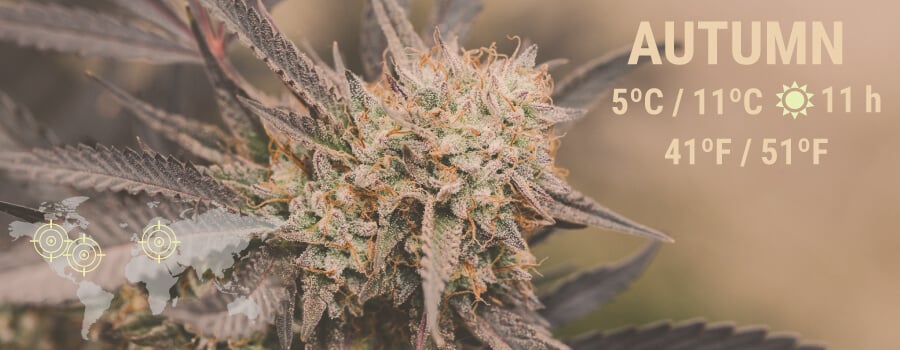
SEPTEMBER
• Average daylight hours:
UK: 14h
Washington: 13h
Alberta: 12h 50m
• Average temperature:
UK: 12.5–19.3°C
Washington: 12–21°C
Alberta: 3.8–17.4°C
Daylight hours begin to get much shorter during September, and temperatures within Canada and more northern regions can drop very low during the night. Female plants will start to develop much larger flowers with increases in trichome and pistil production. Plants will start to smell seriously good during September. Keeping plants dry during this stage is very helpful as it can help to reduce the formation of mould in the flowers. Keeping them under a tarp or shelter of some kind is massively beneficial.
Photoperiod plants grown in areas such as Alaska and Iceland will have started flowering by this stage.
OCTOBER
• Average daylight hours:
UK: 11h
Washington: 11h
Alberta: 11h
• Average temperature:
UK: 9.6–15.3°C
Washington: 8–16°C
Alberta: -1.2–12.6°C
Autumn has arrived. Temperatures begin to plummet during October. Growers within Scandinavia, Canada, and Alaska should consider moving potted plants indoors or into greenhouses to protect them against the first frost. Areas of the UK and Norway are subject to consistent rain during this month, and growers should erect shelters to protect plants against overwatering and possible root rot. Flowers will begin to near harvest. Growers within regions that experience less moisture and rainfall can afford to leave their plants to grow for longer periods. However, growers in wetter regions should harvest during early October to minimise the chance of fungal infections and bud rot. It’s time to start drying and curing cannabis flowers for smooth smokes.
The more green-thumbed cannabis growers can elect to start planting other species such as spring cabbages once their cannabis plants are out of the ground. Growers who have opted to pollinate their plants for breeding purposes should be collecting seeds during this period.
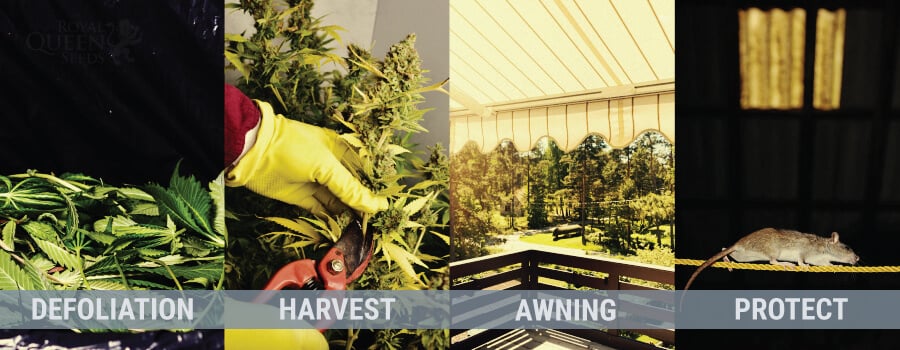
NOVEMBER
• Average daylight hours:
UK: 10h
Washington: 9h 30m
Alberta: 9h
• Average temperature:
UK: 6.2–11.2°C
Washington: 5–11°C
Alberta: -9–2.9°C
The outdoor growing season is officially over by this point. Growers who have moved their plants into greenhouses or indoors can begin to harvest their flowers. Frost will have set in within the most northern regions, and temperatures in the UK, Washington, and Denmark will be too cold to sustain optimal conditions.
Although the garden is empty, there is still work to be done. Clear leaves and raise containers to prevent water-logging. Bird feeders can continue to be stocked to ensure pest control for next year’s growing season. Seasonal bonfires can be lit to clear away debris that cannot be placed in the compost pile.
DECEMBER
• Average daylight hours:
UK: 8h
Washington: 8h 30m
Alberta: 8h
• Average temperature:
UK: 4.7–9.1°C
Washington: 3–8°C
Alberta: -14.4–-2.3°C
During December, winter is well on the way, temperatures are getting seriously low, and days are getting much shorter. At this point, growers will be enjoying the fruits of their labour. Blaze a joint and get back out into the fresh air to keep your garden in good shape for next year. You may need to insulate outdoor taps to prevent freezing. Make sure your storage shed or unit is secure from critters such as mice. Now, go inside, light the fire, and enjoy some of the results of your hard work.


























